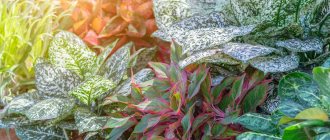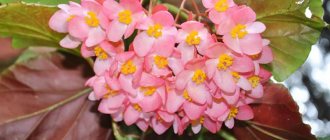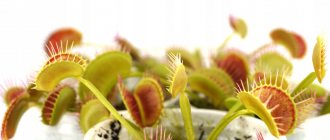What are the beneficial properties of cardamom?
The plant is rich in B vitamins, ascorbic acid, and rutin. It contains trace elements, minerals, proteins, thiamine. It improves body tone and prevents illness. I drink a drink with cardamom for prevention:
- flu;
- colds;
- cough;
- diabetes
For me, growing rosemary and elettaria in my apartment is a way not only to create an aesthetic corner, but also a source of healthy products.
I use cardamom oil as an antiseptic to help with sore throats and fungal infections. For pulmonary diseases, it helps improve expectoration.
Water procedures with cardamom oil help to calm down. By adding it to food I eliminate heartburn.
What to substitute in the recipe
How can you replace cardamom if you can’t buy it because of the high price? While it has its own completely unique flavor, there are still other spices you can use as a substitute.
Mix equal parts cinnamon and nutmeg and use in place of the same amount of cardamom called for in your recipe.
Try 1 part each cinnamon and ginger or cinnamon and ground cloves.
So, you have learned what cardamom is, how to use it and why it has been famous for centuries for its culinary and medicinal properties.
Cardamom varieties for growing on a windowsill
Biologists call cardamom eletharia. This genus includes only one species - Eletaria cardamomum.
| Variety | Type | Origin | Suitable for growing on a windowsill? | Fruit price | Aroma |
| Malabar | Green | South India | Yes | Dearest | Strong camphor |
| Ethiopian | Black | Africa | Yes | Average | Camphor smoky |
| Korarima | Black | Africa | Yes | Average | Coffee |
| Melagusta | Black | Liberia | Yes | Average | Black pepper |
| Javanese | Black | India | Yes | Average | Camphor smoky |
| Chinese | Black | China | Yes | Average | Camphor smoky |
| Bengal | Black | India | Yes | Average | Camphor smoky |
All black and green types are suitable for growing at home.
To learn how spices grow in nature, watch the following video:
How to get seasoning
When the cardamom fruit is fully ripe, it opens and the seeds fall to the ground or are blown away by the wind. Therefore, the pods are harvested while they are in a slightly immature state, and the seeds inside them are just beginning to darken. Next, the pods are dried in the sun.
Sold in whole, broken or crushed pods, seeds only and in ground (powdered) form.
What you need to grow cardamom from seeds
To create an exotic green corner, you need high-quality planting material. Also needed:
- air humidification system;
- container for planting;
- acidic soil.
Choosing the optimal place in the house
The culture needs warmth and moisture. In order for the seeds to germinate, the room must be heated to 28 degrees or higher. To maintain stable humidity, I cover the container with cardamom with film.
This creates an optimal microclimate. Some gardeners joke that cardamom germination is no more difficult than storing and growing horseradish. I described how to do this in another article, enjoy reading!
Cardamom can be grown in a greenhouse or at home
Selection and preparation of containers
A regular flower pot will do. I fill it with soil and water it. I place no more than 2 seeds in one container.
Soil selection
The optimal soil for cardamom is acidic (about 5.5-6 units). You can make such soil yourself. I prefer ready-made mixtures from the store.
For cardamom to grow well, you need soil enriched with humus, not humus.
Creating the necessary conditions: lighting, air humidity, temperature
Cardamom requires moderate, regular watering. I moisten the soil in the evening by spraying liquid from a spray bottle over the sprouts. When there is excess moisture, the rhizomes begin to rot. In winter, I reduce the frequency of watering several times.
In summer, cardamom grows well in warm conditions. In winter, when the holiday season begins, the normal temperature is 15 degrees.
Should you plant cardamom in winter?
Of course not!
The culture suffers in a draft. I don’t put the pot in a ventilated place, otherwise the specimen will quickly die.
The optimal frequency of feeding is once every 3 weeks during the active growth season.
I replant an adult plant every year. On average, a seedling takes root within a week.
Knowing the necessary conditions for cardamom, try growing a bay leaf on the window! Care is not much different, but it’s nice to always have a fresh product on hand).
Seed preparation
The best planting material is large seeds. Do not purchase seed pods - it is impossible to judge the quality by their appearance.
Cardamom seeds ripen in bean-like pods
Sowing rules
Sequencing:
- I check the acidity of the soil.
- I prepare the furrows for the seeds.
- I'm sowing.
- I knead the soil with my hands and sprinkle the seeds with it.
- I moisten with a spray bottle.
- Cover with film.
- I put it in a warm place.
The sowing depth is twice the width of the seed.
Every day I remove the film for a quarter of an hour to prevent the appearance of mold.
By the way, this is not the only tropical crop that can be planted. Not long ago I told you how to grow bamboo. Trust my experience - it goes great with cardamom!
Seedling care
The average germination time of seeded material is 35-55 days. I remove the polyethylene when the plants reach 15-20 cm. You can replace the film with a bottle (plastic, glass).
Under natural conditions, cardamom grows in the tropics. The normal level of air heating is up to 35 degrees Celsius. In order for seedlings to develop quickly, a humid, hot climate is necessary. The minimum air temperature is 28 degrees.
I moisturize the shoots daily. No feeding required.
Author's note
Natalia Papanova
Blog author
Sprouts need diffused light. The plant naturally grows in conditions of average sunny day, so it needs lighting less than 14 hours a day.
When to replant seedlings
I replant cardamom when the seedlings grow. A height of about 20 cm is considered sufficient. For seating, I take wide, shallow containers.
Cardamom seeds sprout 1-2 months after sowing
Caring for cardamom at home
Fellow gardeners, the crop develops quickly and does not get sick if adequate conditions are provided. To do this, I organize warming up, air humidity, and regularly add additives to the soil. In nature, specimens grow in the tropics, so they cannot tolerate cooling below 10 degrees Celsius. Cardamom is a perennial seasonal plant that needs rest.
Illumination
Young shoots develop well in diffused light. Adult culture needs bright, diffused lighting. In the summer, I install a shadow source above the specimen so that direct sunlight does not harm it. In winter, I organize additional lighting sources, since in conditions of too short daylight hours the plant becomes weaker and gets sick.
Temperature
Cardamom is a heat-loving crop. In summer, air heating of about 25-28 degrees is required. The specimen can withstand heat up to 35 degrees without any problems.
Winter time is the rest season. I choose a cool place for the flower, making sure that the temperature does not exceed 15 degrees.
Air humidity
Cardamom is a tropical crop that naturally grows in humid environments. To provide the necessary comfort to the flower, I spray the bush daily with a spray bottle. I have a shower once a week. If this is not possible, I remove dust and dirt from the green parts with a damp soft sponge.
Cardamom does not tolerate dry air very well and gets sick. To protect the plant I use the preparation “Zircon”.
For growth, development, flowering, cardamom needs warmth and moisture.
How to water
During the warm season, cardamom needs water. Regular daily watering is required. I make sure that the soil is moistened evenly and that the liquid does not stagnate.
In the cold season, I reduce the frequency of watering, making sure that the soil does not dry out completely. The average frequency of watering in winter is once every 2 weeks or a little more often.
I use pre-settled water. Optimal heating is 16-18 degrees.
Top dressing
I feed the crop in spring and summer - this activates growth. For the first time, I enrich the soil 2 months after transplantation, since before that the soil contains a sufficient amount of nutritional compounds for the development of the bush. The best fertilizer is a mixture for vegetables made from minerals and organic matter. I do not use compounds with nitrogen - they are harmful.
The optimal frequency of feeding in summer is once every 3 weeks.
Experts talk about the difference between organic and mineral fertilizers in the following video:
Features of transplantation
I start by choosing a suitable container - shallow, wide. At the bottom I make a layer of drainage. I fill the pot with ready-made acidic soil or a mixture of turf and humus, sand (the last ingredient is half as much as the first two).
When is a cardamom transplant needed?
The culture, like lemon balm, suitable for indoor growing, grows and develops quickly. I replant the bush every year.
Cardamom grows quickly, so it needs regular replanting.
Features of flower pruning
I organize pruning in the spring - in March, April. The event is necessary to form the crown. Rules:
- I remove the side trunk to activate the growth of the “false” one.
- I save 2 buds on the shoot to form a bush.
- I remove parts of the plant that break the symmetry and stick out to the sides.
- I thin out opposite branches that interfere with each other.
- I pinch the top.
Chemical composition
Cardamom has healing properties due to its composition. This exotic spice contains many chemicals that can prevent disease and promote health.
Nutritional value of cardamom per 100 g.
| Name | Quantity | Percentage of daily value, % |
| Energy value | 311 Kcal | 15,5 |
| Carbohydrates | 68.47 g | 52,5 |
| Protein | 10,76 | 19 |
| Dietary fiber | 28 g | 70 |
| Niacin | 1.102 mg | 7 |
| Pyridoxine | 0.230 mg | 18 |
| Riboflavin | 0.182 mg | 14 |
| Thiamine | 0.198 mg | 16,5 |
| Vitamin C | 21 mg | 35 |
| Sodium | 18 mg | 1 |
| Potassium | 1119 mg | 24 |
| Calcium | 383 mg | 38 |
| Copper | 0.383 mg | 42,5 |
| Iron | 13.97 mg | 175 |
| Magnesium | 229 mg | 57 |
| Manganese | 28 mg | 1217 |
| Phosphorus | 178 mg | 25 |
| Zinc | 7.47 mg | 68 |
Cardamom propagation
Friends, the main methods of propagating the crop are by seed, dividing the roots and separating from apical cuttings. Since cardamom belongs to the ginger family, the second option is the best option.
| Reproduction method | Seeds | Dividing the roots | Cuttings |
| Complexity | Minimum | Average | Minimum |
| Germination rate | Minimum | Maximum | Average |
| Probability of germination | Average | Maximum | Average |
| Time until reaching fertile age | Maximum | Minimum | Average |
By dividing the rhizome
I carry out this procedure when replanting, thoroughly shaking off the soil. I make sure that the selected specimen has 2 buds and 2 active roots. After separation, I disinfect the wounds with activated carbon, then immediately place them in previously prepared soil.
A healthy, large bush is suitable for division.
You cannot plant a young specimen in already used soil: it contains no nutrients and the plant will not be able to develop.
Properly diluted cardamom blooms already in the 3rd year
Seeds
To grow cardamom from seeds at home, I place the seed at a depth twice the width of the seed. I sprinkle the surface with substrate, spray it generously from a spray bottle, and cover it with polyethylene and glass. For germination, a temperature of about 28 degrees Celsius is required. Sprouts need diffused good lighting.
By cuttings
The material for the procedure is cuttings obtained from an adult bush. Size – up to 10 cm. I cut specimens with a sharp, disinfected knife; the wound is immediately treated with ash and activated carbon. Quick treatment will prevent the area from rotting.
In order for the cuttings to take root, it is necessary to maintain adequate temperature conditions - not lower than 20 degrees. The roots will grow faster if the cut is treated with boric and succinic acid. You can put the cuttings in water. As soon as the root system appears, I plant the specimen in a container with acidic soil and water it abundantly.
Botanical characteristics
Eletaria is distinguished by a large fleshy stem, its height, as a rule, does not exceed 1 m. The root of this plant is dense, fleshy, and includes 2 types of stems. Cardamom leaves are rich green, darkish, long (the average size of 1 piece is 55 cm).
The second stem of cardamom is creeping in type and has no leaves. The flowers of the plant are white and purple, the fruits are presented in the form of boxes filled with black seeds. The size of such a box does not exceed 2.3 cm. The plant belongs to the ginger family and has high nutritional value.
Diseases and pests
Culture is threatened:
- viruses;
- scale insect;
- mite.
Root rot is possible if the soil is over-moistened. Lack of moisture leads to yellowing of the foliage. Sometimes waterlogging is manifested by a brown border of leaves.
Have you ever had cardamom pain?
Not really
Spider mites appear as thin webs. With severe infection, the bush loses its greenery and growth slows down. To cure a specimen, I use Fitoverm and Actellik. You can irradiate the plant weekly for 2 minutes with ultraviolet light.
Scale insects and false scale insects appear as sticky drops on the greenery. With severe infection, the leaves dry out and fall off. I treat the bush with Fufanon and Fitoverm.
You can see about the use of Fitoverm here:
Harvesting and storage
Dear plant growers, both when growing ginger (read about this in another article) and when breeding elettaria, one of my main goals is to obtain a harvest.
Cardamom bears fruit in bean-shaped pods filled with green, yellow round grains. The average seed diameter is 4 mm. The spicy smell is appreciated. The bush bears fruit from the age of three.
Flowering occurs in the first three months of the calendar year. I have been collecting seeds since October. The fruits ripen unevenly, making harvesting difficult. The optimal time for removal is shortly before ripeness, since mature seeds spill out of the pods.
I dry the pods in the oven. It is better to store the boxes and grind the required amount of beans immediately before use. If you chop the entire crop at once, it will quickly lose its flavor.
I store the spice in a tightly closed jar at a temperature of no more than 25 degrees Celsius.
Keep cardamom unground and preserve the spice longer.
FAQ
Natalia Papanova
Blog author
Ask your question
Friends, many people know tropical culture only from store shelves with spices, so there are many questions related to its growth, cultivation and use.
What are the contraindications for consuming cardamom?
Cardamom is beneficial when used wisely. Excess spice leads to stomach pain. Do not eat the product if you have: • allergies; • individual intolerance; • gastritis; • stomach ulcer; • hypertension. Cardamom is contraindicated for pregnant women and people suffering from chronic stomach, intestinal, and liver diseases.
How is cardamom used in cooking?
The fruits of the plant are added to drinks and main dishes. They are combined with: • pepper; • cumin; • cinnamon sticks. When cooking, I add the seasoning immediately, because it takes time for the flavor to develop. I remove the seeds after cooking. In sweets, fermented milk comes fresh ground cardamom. The plant's greens are ideal for salads. I include the seeds in marinades for vegetables and fish, and use them in cheeses and canned food. Cardamom is a traditional ingredient in German gingerbread and Scandinavian sausages. In Russia they prepare Easter cakes with it.
Why is cardamom added to alcoholic drinks?
Adding cardamom to alcohol removes the characteristic unpleasant odor from the drink and enriches the taste.
The video explains the benefits of drinks with cardamom:
Application
In the cooking of different nations
It was the fruits that became famous for their aroma. Black seeds have become one of the most popular and expensive spices in the world. The leaves are in no way inferior, you just have to rub them between your fingers and they will acquire a unique charm of tart aroma.
Scandinavians add cardamom to fish and meat dishes, as well as drinks: liqueurs, mulled wine.
Hindus use rice dishes with almonds and saffron.
Arabs love the famous Bedouin coffee.
The Chinese are into tea.
In Russian cuisine it is used as an additive in dough for various confectionery products.
Medicine
According to the description of the flower, cardamom is widely used for medicinal purposes:
- digestive system: has an anthelmintic effect, relieves stomach pain, and in combination with fennel eliminates vomiting in children;
- respiratory system: treats asthma, bronchitis, together with cinnamon - pharyngitis and eliminates dry throat;
- cardiovascular: lowers blood pressure, stabilizes blood supply to organs, etc.
If we talk about the entire body as a whole, the plant tones and strengthens.











